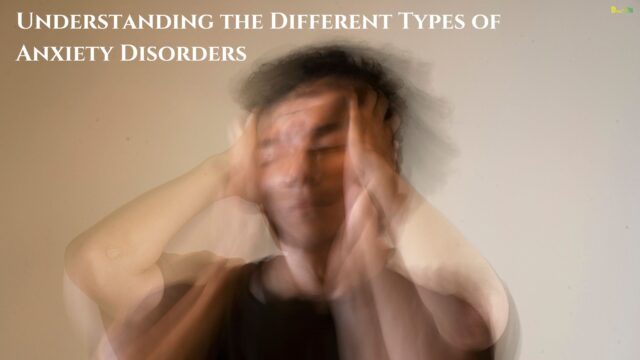We all enjoy anxiety occasionally. Maybe it’s a flutter of nerves before a big presentation or a knot to your belly at some stage in a turbulent flight. But for some human beings, tension turns overwhelming and interferes with each day’s existence. This is when everyday fear transforms into a tension sickness. Anxiety disorders are particularly not unusual, affecting tens of millions of people globally. They can manifest in numerous approaches, and information on the different types is crucial for getting the proper diagnosis and finding effective remedies. By exploring those distinctive varieties of tension (Types of Anxiety), we can empower ourselves and others to control this situation and live gratifying lives.
Common Types of Anxiety Disorders
Now that we have installed the difference between regular anxiety and a tension disorder, permit’s delve into the numerous paperwork this condition can take.
A. Generalized Anxiety Disorder (GAD)
The hallmark of GAD is the excessive worry that permeates each day’s existence. People with GAD revel in a consistent undercurrent of anxiety, frequently fretting about budget, health, relationships, or even minor such things as ordinary obligations. This fear will become intrusive and disrupt their ability to function usually. Physical symptoms like fatigue, muscle tension, sleep troubles, and headaches often accompany GAD, similarly adding to the distress.
B. Panic Disorder
Panic sickness is characterized by the sudden onset of severe worry and bodily signs and symptoms called panic assaults. These attacks come on suddenly and top within minutes, causing a feeling of approaching doom or loss of control. Physical signs and symptoms can encompass coronary heart palpitations, shortness of breath, chest ache, dizziness, and sweating. The worry of experiencing another panic assault can emerge as so overwhelming that it results in agoraphobia, a fear of conditions in which a getaway might be tough or assistance unavailable.
C. Phobias (Specific Phobias)
Phobias are intense and irrational fears of particular objects or conditions. Unlike a healthy worry that motivates warning (like being wary of a rattlesnake), phobias are out of share to the actual risk. Common phobias encompass spiders, heights, public talking (glossophobia), enclosed spaces (claustrophobia), or flying (aerophobia). These phobias can considerably limit someone’s lifestyle, inflicting them to avoid situations that trigger their worry.
D. Social Anxiety Disorder (Social Phobia)
Social anxiety disorder is characterized by way of a severe fear of social situations and being scrutinized or judged by others. People with social anxiety may additionally worry excessively about embarrassing themselves, blushing, or appearing incompetent. This fear can happen in physical signs and symptoms like trembling, sweating, and nausea during social interactions. The results of social anxiety can be excessive, leading to avoidance of social gatherings, job obstacles, and emotions of isolation.
E. Separation Anxiety Disorder
Separation anxiety ailment is commonly visible in children who experience immoderate fear or misery while separated from attachment figures, which include dad and mom or caregivers. This fear can show up as clinging behavior, crying, or tantrums while separation happens. While extra commonplace in youngsters, separation anxiety also can arise in adults, inflicting widespread distress and impacting relationships.
F. Other Anxiety Disorders (Optional)
There are other, less common anxiety disorders, along with selective mutism, wherein a toddler can communicate normally in certain conditions but stays mute in others, and substance/remedy-brought about tension disorders, where tension symptoms are because of using positive substances or medicinal drugs.
Conclusion
As we’ve explored types of Anxiety, tension problems occur in numerous approaches. From the all-encompassing worry of GAD to the crippling fear of social conditions in social anxiety, each kind gives unique challenges. Recognizing that special paperwork is the first step toward getting the right prognosis and finding effective treatment.
If you observe yourself or someone you recognize is probably struggling with a tension ailment, in search of professional assistance is crucial. Therapists can hire diverse techniques, like cognitive-behavioral remedy (CBT), to help manage traumatic thoughts and develop coping mechanisms. In a few instances, remedy may also be encouraged to supplement therapy.
Remember, tension issues are notably treatable. With the proper assistance and resources, you can conquer these challenges and maintain a satisfying existence. There is hope, and recuperation is possible. Don’t hesitate to reach out for help – you aren’t on my own.









